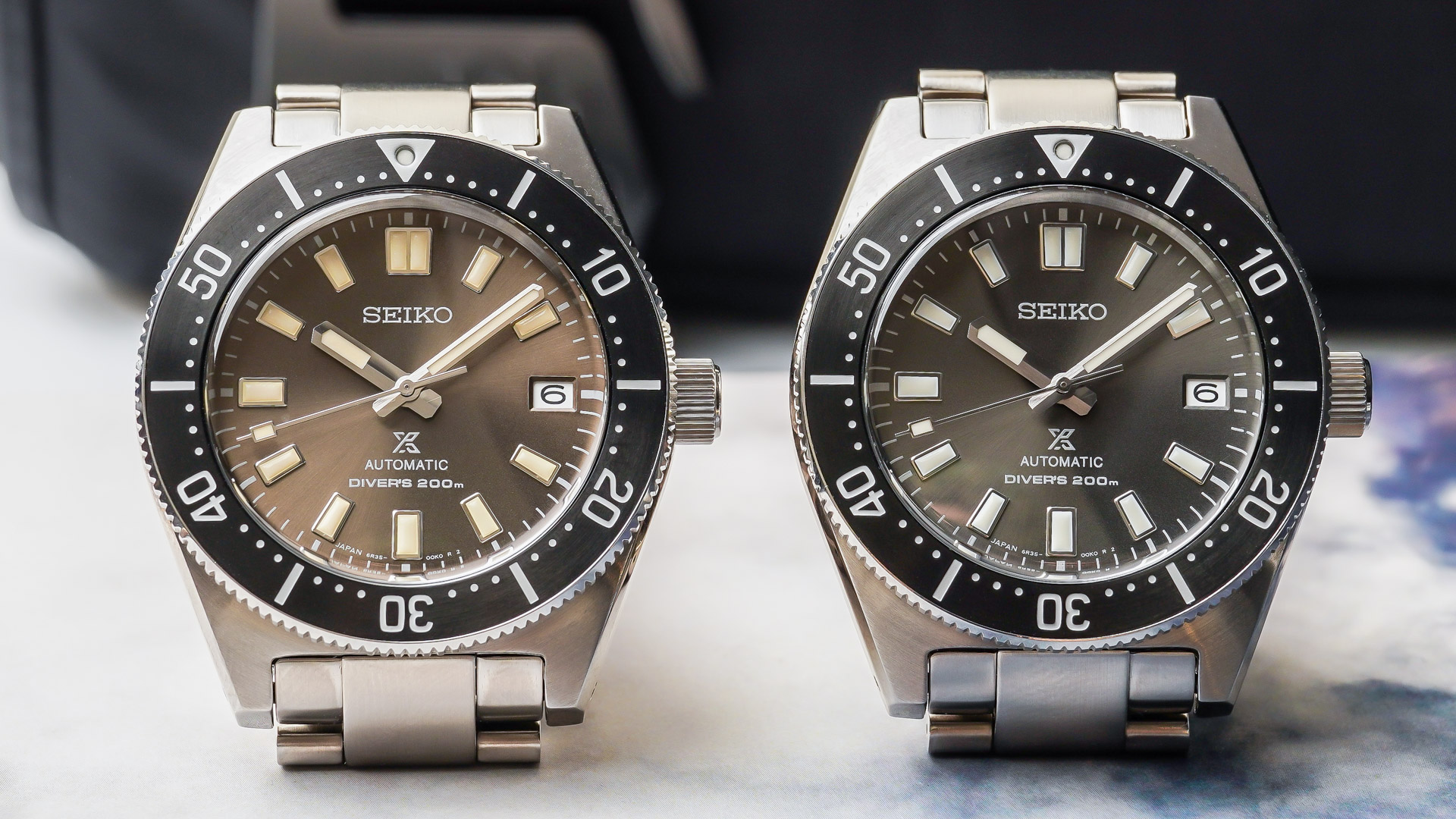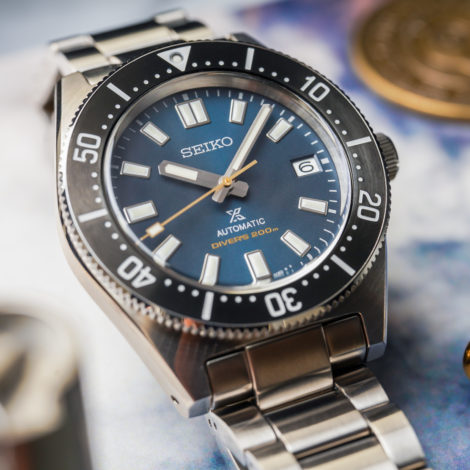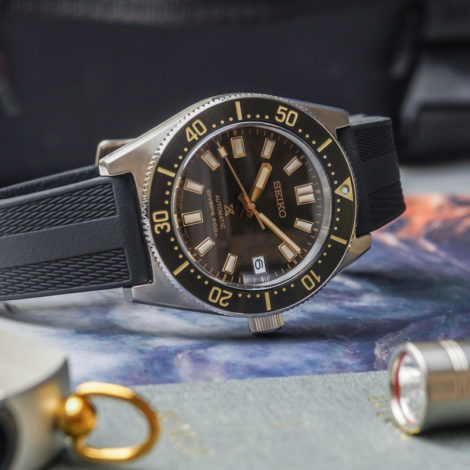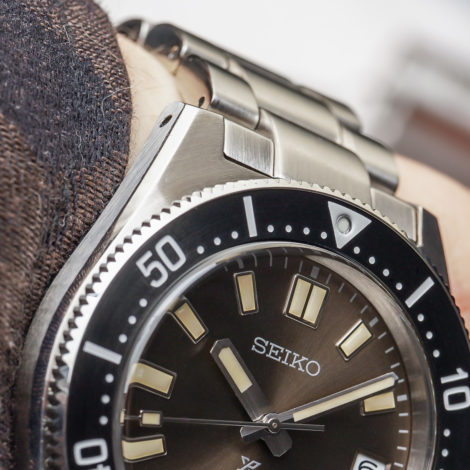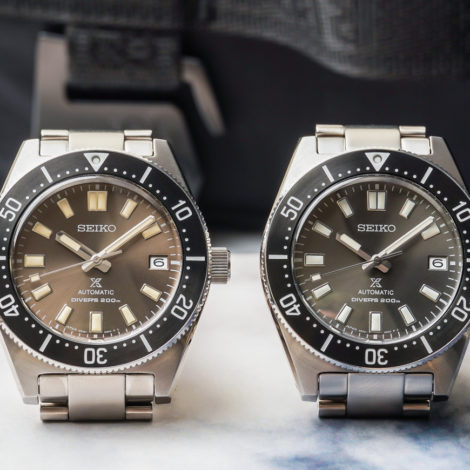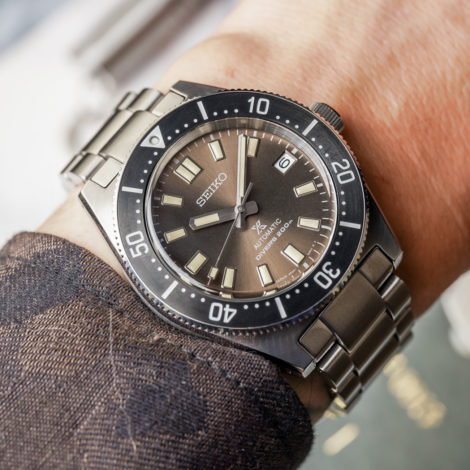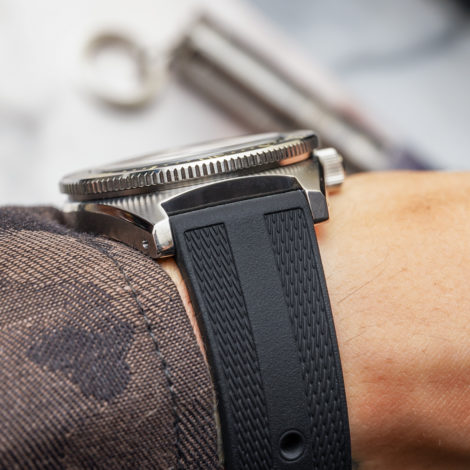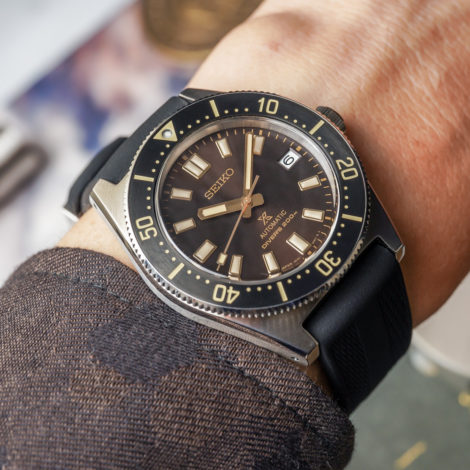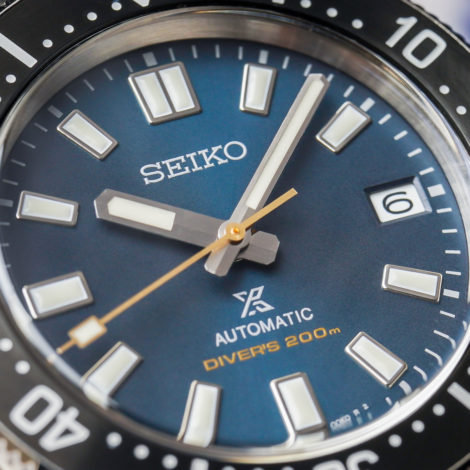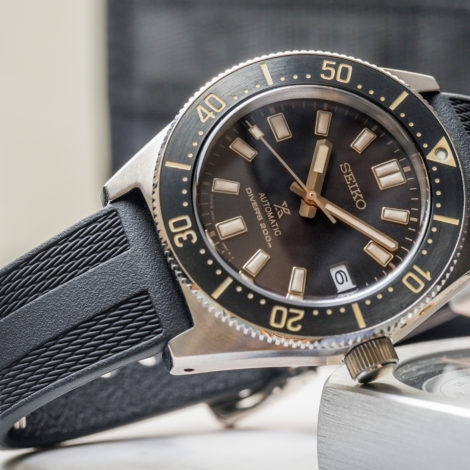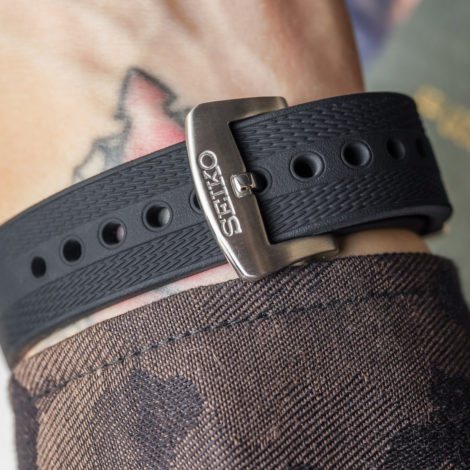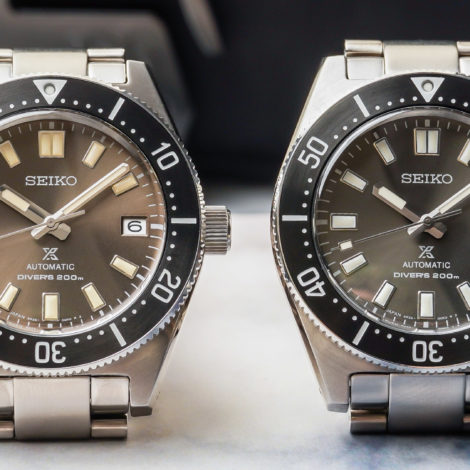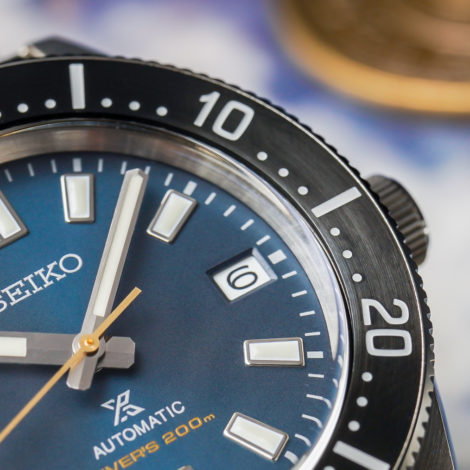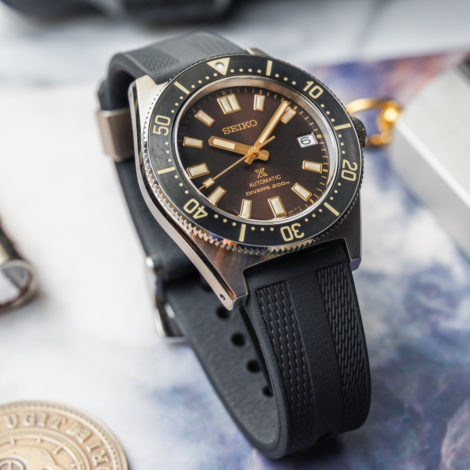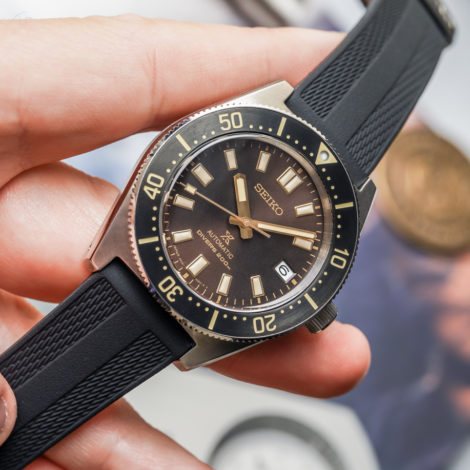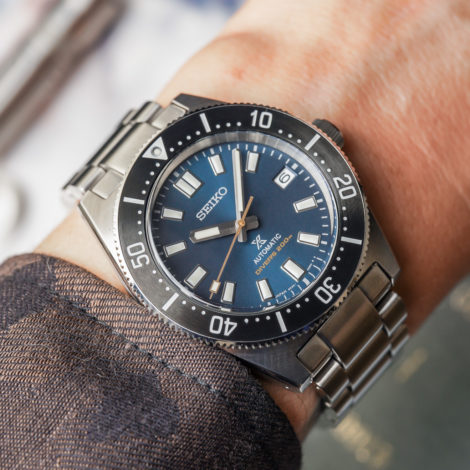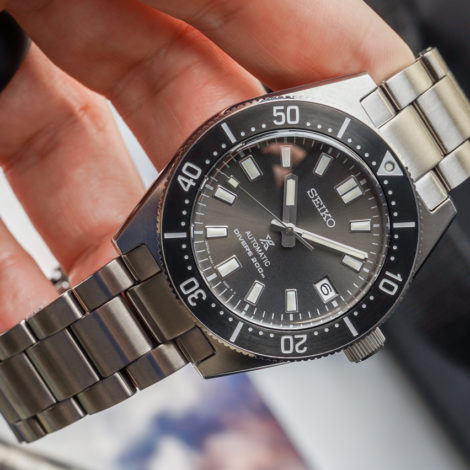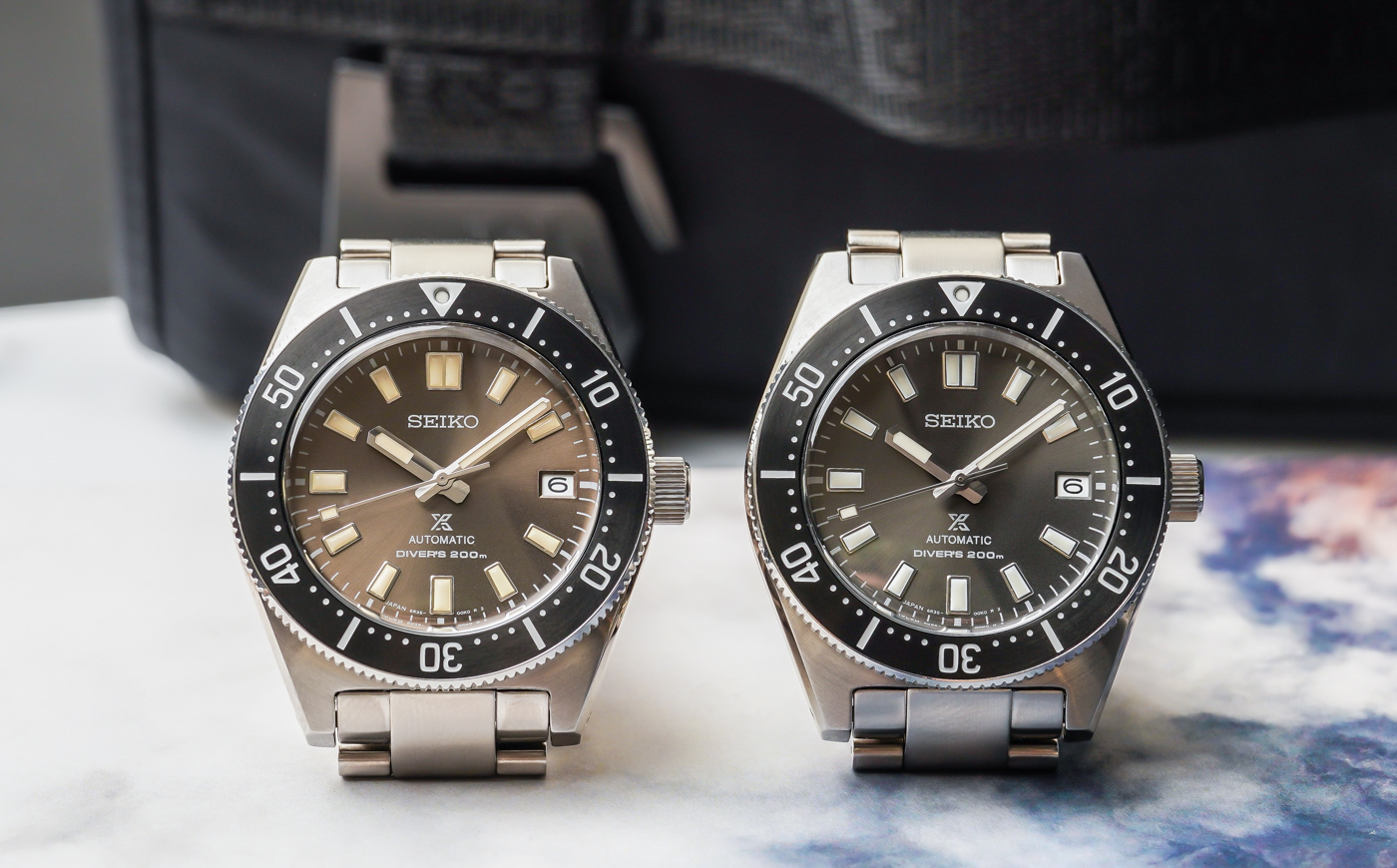
Seiko has wholeheartedly embraced the idea of reviving classic models from its back catalog in recent years, especially its classic dive watches but, as a general rule, these releases follow a pattern. First, the brand will release an extremely faithful limited-edition reissue of a given classic timepiece, priced near the top of the model range. About a year later, the brand will unveil a more modestly priced general-production “re-imagining” of the same watch, with some dramatic alteration that disrupts the flow of the original design, be it a completely different handset, new markers, a changed bezel design, or another stylistic change. 2020 seems to be the year when Seiko has recognized and broken that cycle for good. As part of this year’s novelties, the Japanese giant announced a series of four modern re-imaginings of its first ever dive watch, the 1965 62MAS. While the brand has produced high-end reissues and even a series of dramatically restyled versions of the core 62MAS design, this new series of four models might be the first (with the possible exception of the Turtle series) to break the mold of Seiko’s reissue structure and deliver a faithful and affordable recreation for the masses. These four new watches — the gilt-dial Seiko Prospex SPB147, the gray-dial Seiko Prospex SPB143, the boutique special-edition Seiko Prospex SPB145, and the limited-edition Seiko Prospex SPB149 — represent some of the handsomest additions to the current Prospex dive watch lineup.
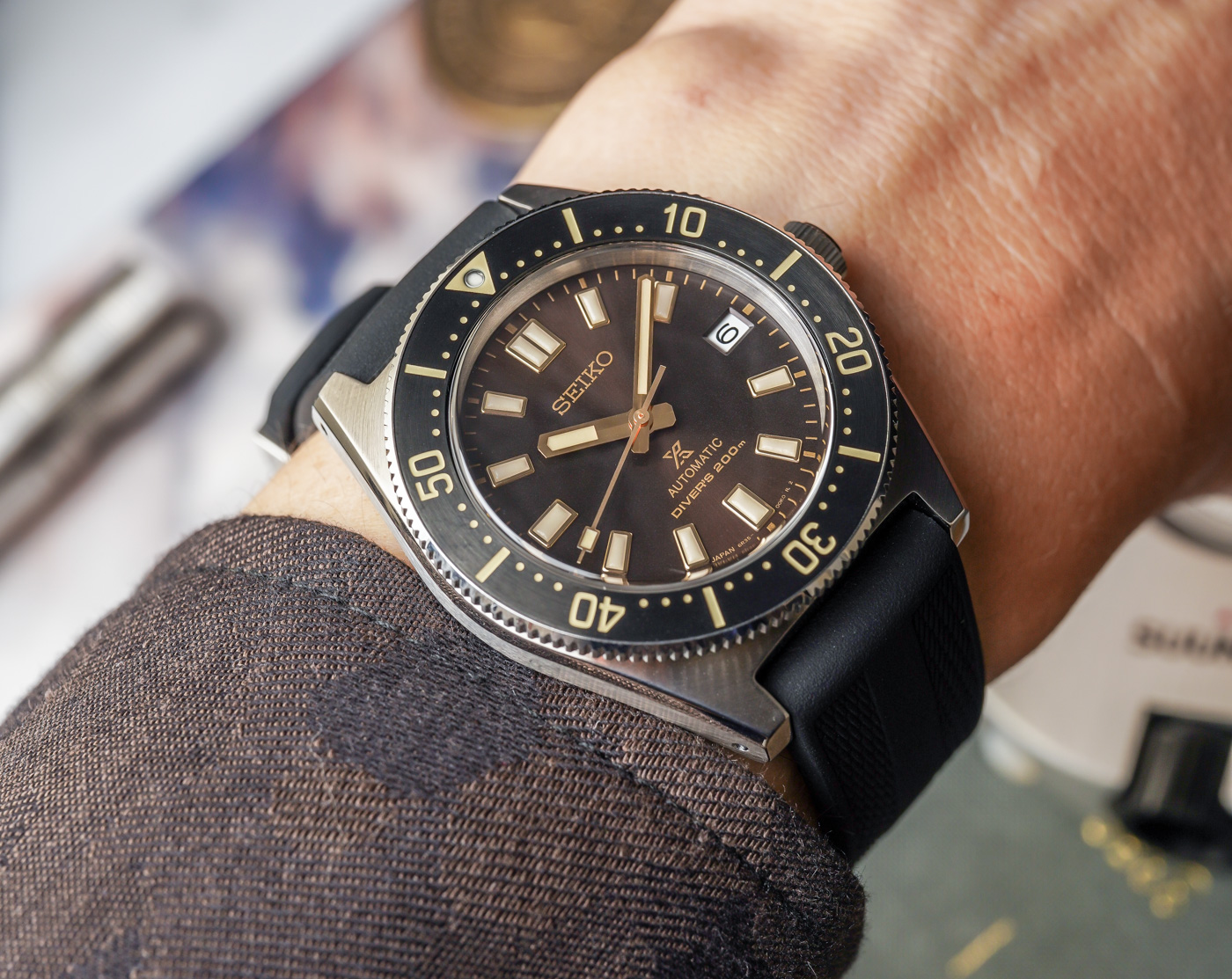
Right off the bat, the stainless steel cases of these new 62MAS style models feel like a departure from previous interpretations on this design. At a 40.5mm diameter and 48mm lug-to-lug, on paper this watch seems like a rather standard midsize diver. As with so many modern Seiko cases, however, these numbers can be deceiving, as clever case geometry helps this one to feel old-school compact on the wrist and far slimmer than the 15mm thickness would imply. While the simple skin diver case style and oversized unguarded screw-down crown might feel straight from the ’60s, Seiko sets these models apart with thoroughly modern attention to detail. The smooth micro-brushing of the case sides is far finer than anything the brand was producing 50 or more years ago, while the black of the bezel inserts is given depth of its own thanks to an attractive radial brushing treatment. Speaking of bezels, like most higher-tier Prospex divers, the feel on these rotating bezels is exceptionally smooth, almost gliding between the 120 clicks but staying strong with virtually no backplay. Like most modern Prospex divers, each of these also gets a solid 200-meter depth rating.
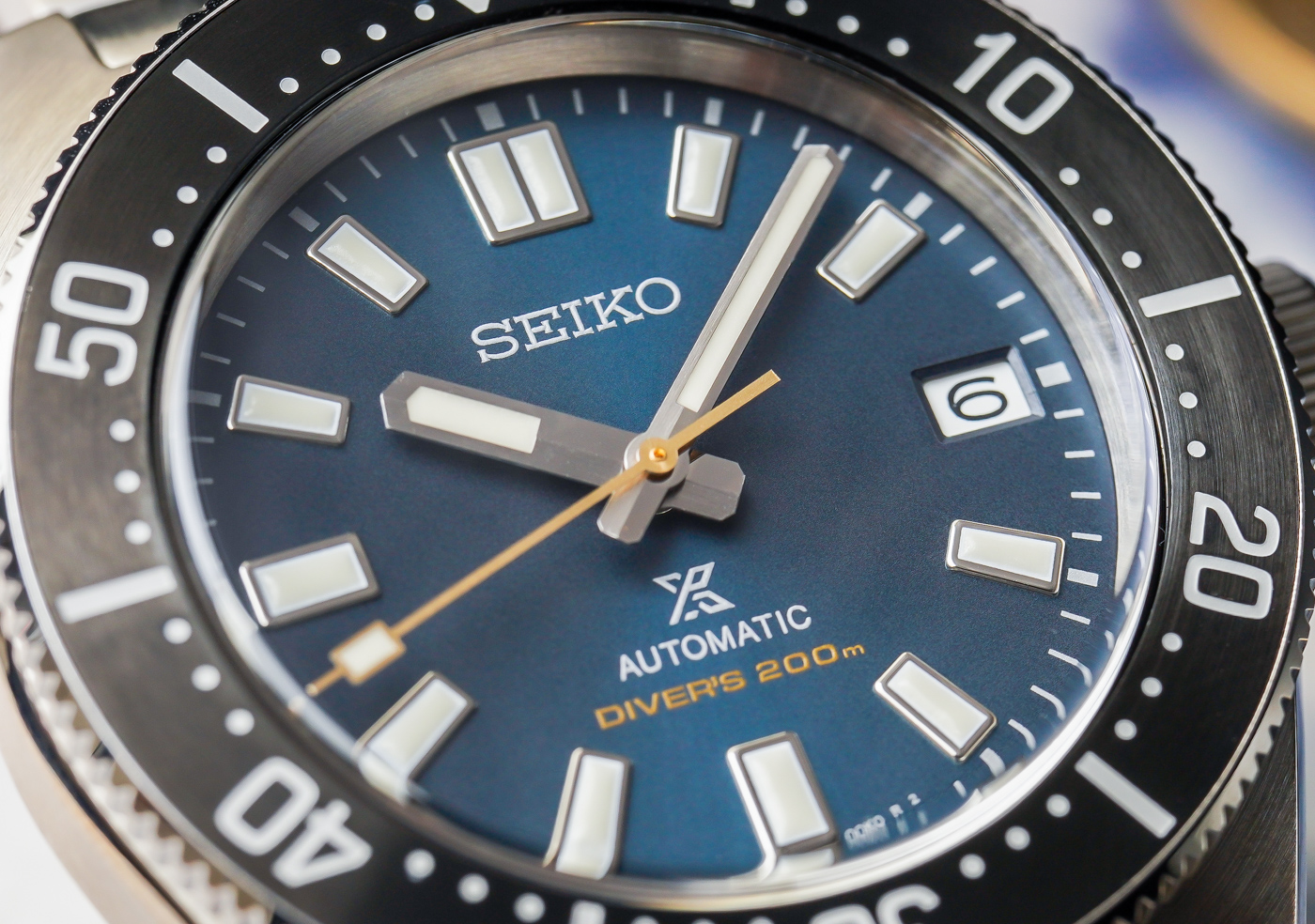
The dials of the new Prospex 62MAS interpretations ride a fine line between exacting recreation and modern homage, finding a middle ground that might genuinely improve on the original. The overall dial design is near identical to the 1965 version, with both the applied rectangular indices and baton hands made noticeably wider. This helps eliminate some of the delicate look of the original 62MAS, allowing it to feel sportier and more like a true dive watch in the process. Once again, Seiko sets itself apart in the little details, like the crisp beveling down the center of the hour and minute hands and the smooth subtlety of the sunburst dial textures. Each of the four models takes this basic formula in a new direction. The most versatile of the bunch is the Prospex SPB143, with a cool slate-gray sunburst dial that fills the role of the traditional black dial. The limited edition Prospex SPB149 takes a summery ocean blue approach, punched up with an orange seconds hand and dial text. The boutique exclusive Prospex SPB145 is a more unorthodox choice, with a brown, almost coppery sunburst accented with warm cream colored lume. The most striking of the bunch, however, is the Prospex SPB147, which takes on a tropical dial look without false patina, thanks to a “root beer” combination of a warm brown sunburst with gilt hands, indices, dial text, and bezel markers, finished off with the same cream lume. An added interesting touch here is that Seiko has used two different lume types on these four models. The pure white lume of the SPB143 and SPB149 glows green, while the cream toned lume of the SPB145 and SPB147 gives off a blue light.
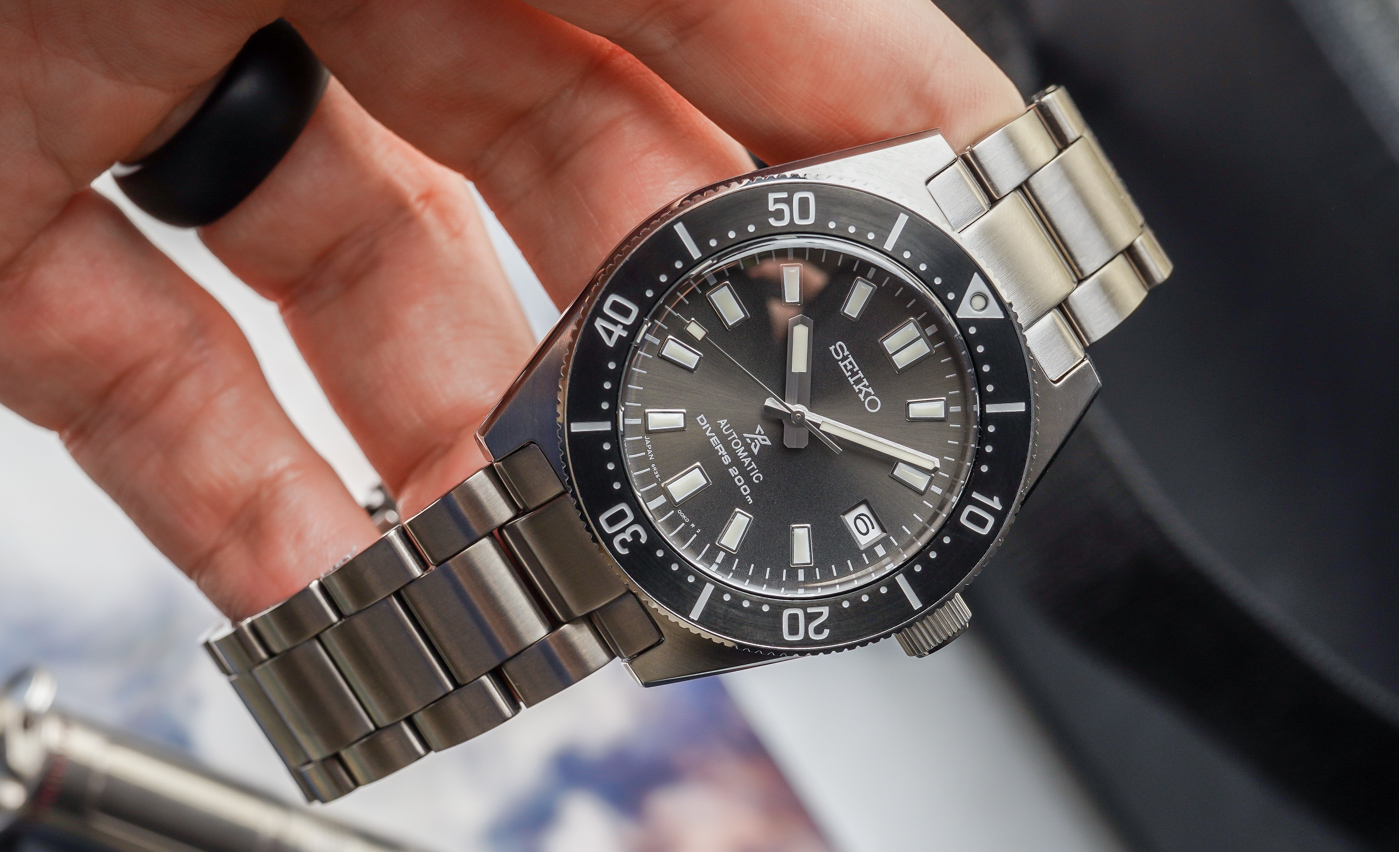
All four models are powered by the in-house 6R35 automatic movement, coupling a hefty 70-hour power reserve with a slow and steady 21,600 bph beat rate.
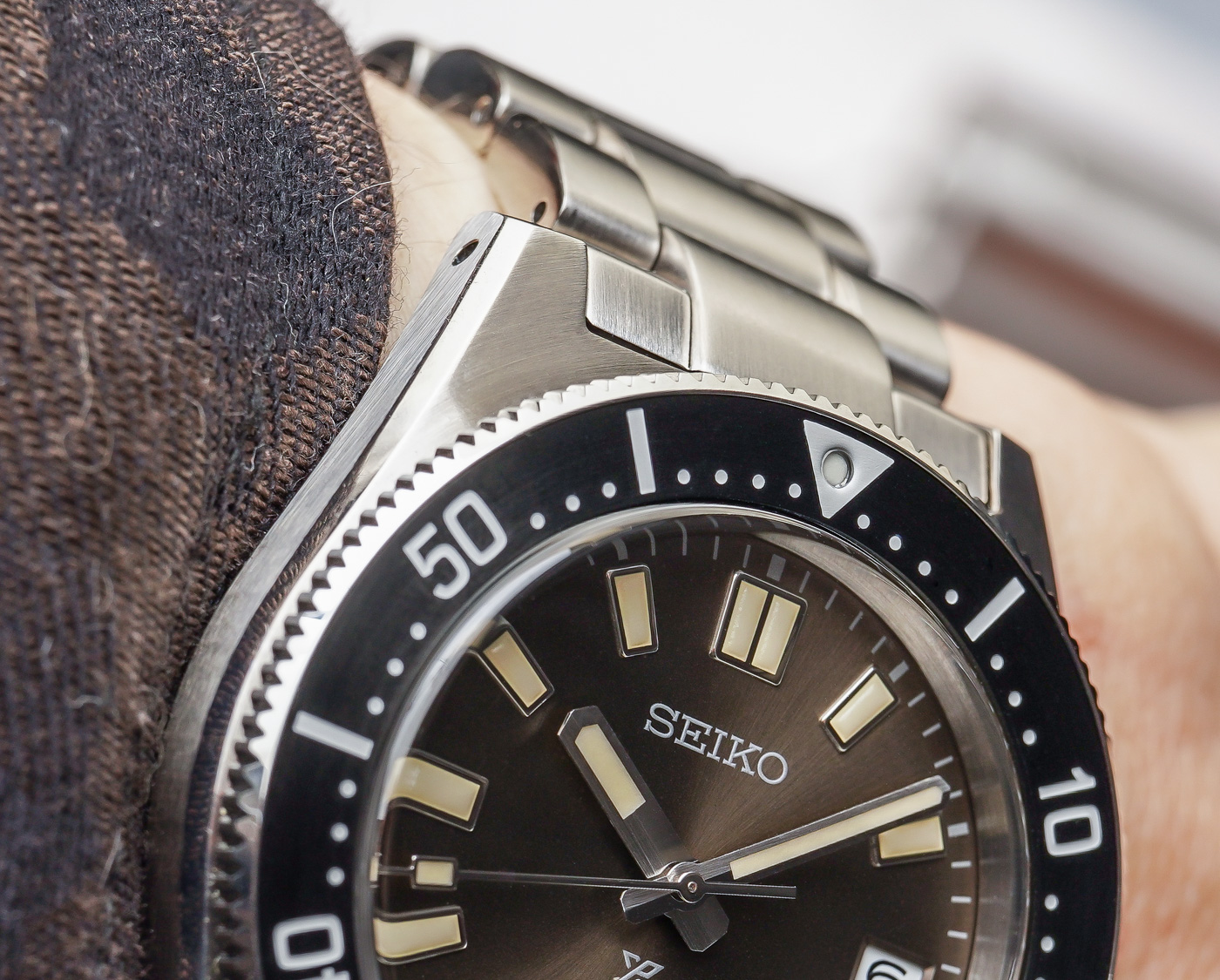
In terms of strap choice, the Prospex SPB143, Prospex SPB145, and Prospex SPB149 are all equipped with Seiko’s three-link oyster style bracelet featuring a two button butterfly clasp. While these bracelets might look identical to earlier offerings from Seiko, the components are all new, with all parts individually machined rather than the previous stamped metal. The end result is palpable on the wrist, leading to a more solid and comfortable feel. The Prospex SPB147, meanwhile, receives a modernized silicone interpretation of the ’60s Seiko “tire track” rubber strap. This supple and comfortable option goes far to add to the laid back vintage feel of this particular version, and is also included as part of the purchase bundle with the Prospex SPB149.
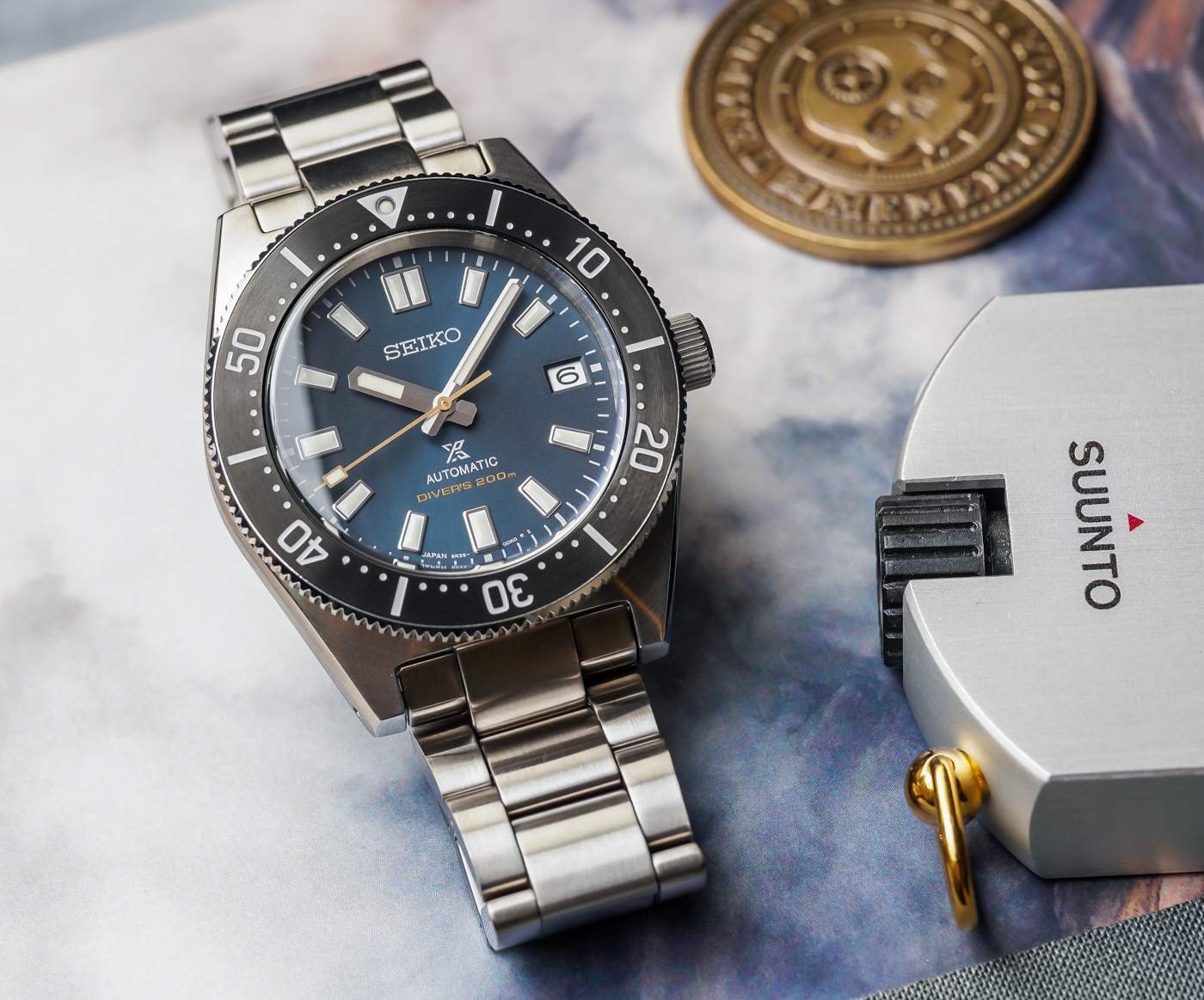
All four of these new Seiko Prospex 62MAS interpretations are some of the handsomest regular production models in the current Prospex line and show a real step forward for the brand in terms of the quality of its modern reinterpretation design work. While Seiko prices have begun to climb steadily of late, the improved finishing shown here is definitely consummate with the move upmarket. All four models will be available in July 2020, with the Prospex SPB149 limited to 5,500 units and the Prospex SPB145 only available through Seiko boutiques. MSRP for the Seiko Prospex SPB147 sits at $1,000, while the bracelet-equipped Seiko Prospex SPB143 and Seiko Prospex SPB145 are both priced at $1,200, and the limited edition Seiko Prospex SPB149 will retail for $1,350. To learn more, please visit Seiko’s website.

